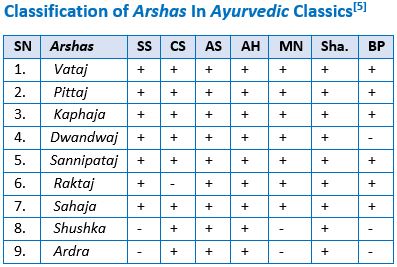A comparative clinical study for haemostatic action of Lajjalu Lepa and Darvi Lepa in Raktarsha
DOI:
https://doi.org/10.21760/jaims.8.7.1Keywords:
Lajjalu Lepa, Darvi Lepa, Raktarsha, Hemorrhoids.Abstract
Arsha is a disease afflicting mankind for thousands of years. In Ayurvedic literature, this disease is mentioned as one of the ‘Ashtamahagadas’[1] and difficult to cure. Nearly 45% of patients attending ano-rectal clinics suffer from the symptoms of Arsha. Vitiation of Doshas adversely affects the digestive fire resulting in Mandagni which in turn lead to constipation. Prolonged contacts of accumulated Mala or excretory material taint Gudavali resulting in Arshas.[2] Acharya Charaka explains Arsha as an abnormal fleshy growth at anorectal region whereas at other sites it is called as Adhimamsa.[3] In spite of progress in modern medicine, there is very little scope in terms of treatment of Hemorrhoids, Surgical techniques of performing hemorrhoidectomy are many and their complications such as pain, anal incontinence, stricture etc. are well known. All these modern surgical & Para surgical techniques are associated with post-operative complications which may be early complications such as hemorrhage, secondary infection etc., & late complications such as anal stricture. Anal incontinence, profuse watery discharge etc.,[4] Hence, in the present study a special emphasis will be made by selecting noninvasive, effective and economic therapeutic modality which has been explained with great details in ancient Ayurvedic Samhitas for the management of Arsha with different type of Lepa which is a painless simple procedure.
Downloads
References
Kaviraj Dr. Ambicadutta shastri, Sushruta Samhita, Published by Choukhambha Sanskrit Samsthana Varanasi, Edition-2014, Sutra Sthana, Chapter 33rd, Avaarniya Adhayaya 4-5 Shloka, p163.
Kaviraj Ambicadutta Shastri, Sushruta Samhita, Published by Choukhambha Sanskrit Samsthana Varanasi, Edition-2014, NidanSthana, Chapter 2nd, Arshasamnidan, 4th Shloka, p306.
Acharya Kashinath Shastri, Charaka Samhita, Published by Choukhambha Sanskrit Samsthana Varanasi, Edition-2006, ChikitsaSthana 14th Chapter Arshoschikitsa adhayaya, 220-221 Shloka, p416.
Sushrutha Samhita: with Nibandha Sangraha, Acharya Yadavji Trikamji, Chaukamba Orientali, Varanasi, Reprint 2012,p271.
Recent trends in the management of arshas/Haemorrhoids. P.Hemanth Kumar. Chaukamba Sanskrit Pratistana, Second Revised Edition 2011,p17.
Essentials of Kayachikitsa II. Volume-1. By Aruna, 1st edition2008,p351.
Agnivesha: charaka samhita, Edited by Vaidya Jadavji Trikamji Acharya. Reprint 2009. Chaukamba Orientalia.p504.
Recent trends in the management of arshas/Haemorrhoids. By Dr.P.Hemanth Kumar. Chaukamba Sanskrit Pratistana, Second Revised Edition 2011,p25.
Sushrutha Samhita: with Nibandha Sangraha, Acharya Yadavji Trikamji, Chaukamba Orientali, Varanasi, Reprint 2012,p431.
Charak Samhita, Chikitsya Sthana Arsachikitsya, 14th chapter sloka no. 220/221, edition 2007, Chaukambha Sanskrit Samsthana, Varanasi, p373.















